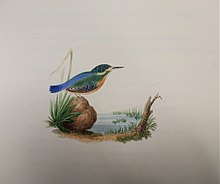
Ontopoetics is a philosophical concept that involves the communicative engagement of self with the world and the world with the self.[1] It is also described as a "poetic order" that unfolds alongside the "causal order" in the process of the communicative engagement with reality and participating in it.[2] It includes the perception of cues or signals, or the expression of actors, as well as "the construction of impressions on re-actors by the deliberate choice of attractive signifiers that communicate factual or illusory realities".[3]
Ontopoetics is not considered a theory but a view of reality and an understanding of the world as a communicative presence.[4]
- ^ Oppy, Graham; Trakakis, N. N. (2017). Interreligious Philosophical Dialogues: Volume 1. Oxon: Routledge. ISBN 978-1-351-61795-6.
- ^ Cite error: The named reference
:6was invoked but never defined (see the help page). - ^ Mandoki, Katya (2015). The Indispensable Excess of the Aesthetic: Evolution of Sensibility in Nature. Lanham, MD: Lexington Books. p. 107. ISBN 978-1-4985-0306-8.
- ^ Mathews, Freya (2009). "Invitation to Ontopoetics" (PDF). FreyaMathews. Retrieved October 5, 2020.